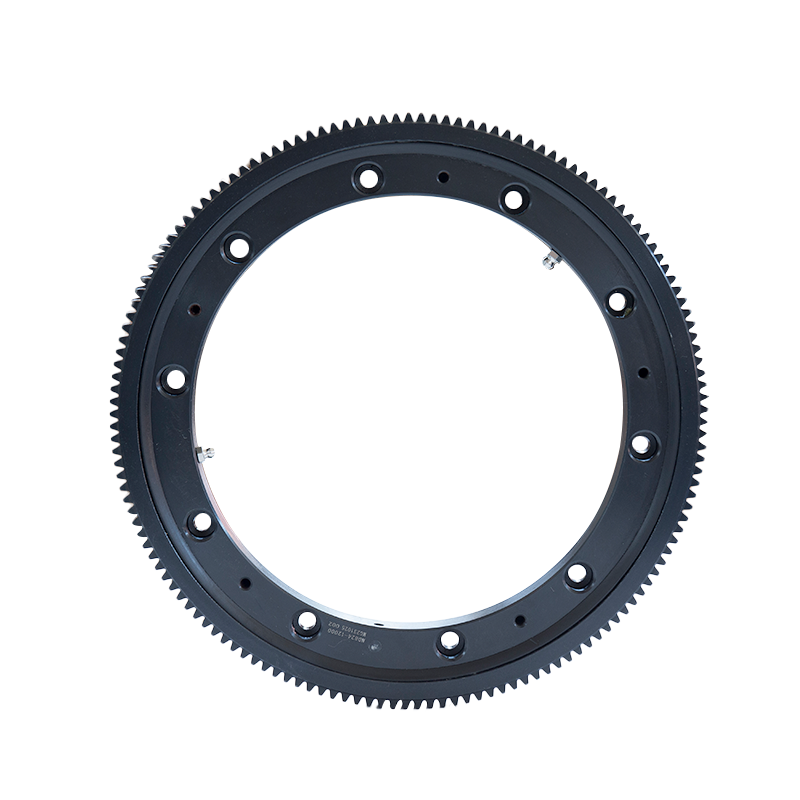How to ensure the safety of L-type single-row ball slewing bearings during use?
 2024.11.13
2024.11.13
 Industry news
Industry news
To ensure the safety of L-type single-row ball slewing bearings during use, the following aspects can be considered and operated:
Choose suitable bearings:Brand and quality: Give priority to L-type single-row ball slewing bearings of well-known brands and reliable quality. These products are usually strictly quality controlled and have higher safety and durability.Model matching: According to the actual needs and working conditions of the equipment, select bearings with matching models to ensure that their load capacity, speed, accuracy and other parameters meet the requirements.
Correct installation and commissioning:Preparation before installation: Before installation, the model, specification and appearance of the bearing should be carefully checked to ensure that there are no defects such as damage and rust. At the same time, clean the installation site to ensure that there are no impurities and oil stains.Installation process:Use special tools for installation, and avoid using rough methods such as direct hitting to avoid damaging the bearing.The installation position and direction of the bearing should be correct, ensuring that the end face of the inner ring of the bearing is close to the shaft shoulder and the outer ring is accurately positioned.

During the installation process, attention should be paid to the uniform force of the bearing to avoid local over-tightening or over-loosening.Debugging and inspection: After installation, debugging and inspection should be carried out to ensure that the bearing runs smoothly and without sticking, and to measure whether its temperature rise and vibration parameters are within the normal range.
Regular maintenance and care:Lubrication management: Regularly check the lubrication of the bearing, replenish or replace the lubricant in time, and ensure that the bearing is in a good lubrication state. For bearings using grease, attention should be paid to their service life and replacement cycle.Cleaning and inspection: Regularly clean the bearing and its surrounding areas to remove impurities such as dust and oil. At the same time, check the wear of the bearing, clearance changes, etc., and promptly discover and deal with problems.Troubleshooting and repair: Once a bearing fault or abnormal phenomenon is found, the machine should be stopped immediately for troubleshooting and repair. For bearings that cannot be repaired, they should be replaced in time to avoid safety accidents.
Comply with operating procedures and safety precautions:Operating procedures: Operators should be familiar with the operating procedures and precautions of the bearing and operate in accordance with the prescribed procedures and methods.Safety protection: During operation, labor protection supplies such as helmets, masks, safety glasses, protective shoes, etc. should be worn to ensure personal safety.Prohibitions: It is prohibited to move or touch the bearing and other dangerous parts when the equipment is running; it is prohibited to put part of the body into the equipment; it is prohibited to use the equipment overloaded, etc.
Pay attention to environmental factors:Temperature and humidity: Pay attention to the changes in temperature and humidity in the working environment of the bearing, and avoid excessively high or low temperature and excessive humidity from causing adverse effects on the bearing.Corrosive substances: Avoid contact between the bearing and corrosive substances or chemicals to avoid damaging the bearing surface or reducing its performance.
The safety of L-type single-row ball slewing bearings during use can be ensured by selecting suitable bearings, correctly installing and debugging, regularly maintaining and servicing, complying with operating procedures and safety precautions, and paying attention to environmental factors.












